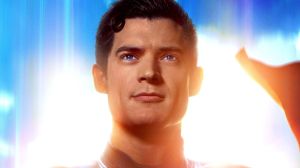Articles
Peacemaker Season 2 Just Added Another Superman Character (And That’s Good News)

As the chief creative architect of the new DC Universe, James Gunn has been clear about his foundational vision for the franchise. Each DCU film and television series is designed to tell a compelling story that new audiences can enjoy without needing to consume every piece of preceding content. At the same time, this is an intricately woven shared universe, where characters, events, and consequences from one project bleed into another. This strategy rewards dedicated fans with a deeper narrative experience and reinforces the universe’s connectivity. No project exemplifies this dual approach better than the second season of Peacemaker, which functions as a direct sequel to its first season while simultaneously deepening its ties to the world established in 2025’s blockbuster film, Superman.
The connections between the two projects have been clear from the start of the season. The primary justification for ARGUS Director Rick Flag Sr. (Frank Grillo) surveilling Christopher Smith (John Cena) is the disastrous “Luthor incident” from Superman. In the film, Lex Luthor (Nicholas Hoult) nearly tore reality apart with his unstable pocket universe technology, making the U.S. government deeply fearful of any similar devices. This places Peacemaker’s Quantum Unfolding Chamber directly in their crosshairs. Warning: Spoilers below for Peacemaker Season 2, Episode 5
Peacemaker Season 2 also shows Chris’s failed audition to join the Justice Gang, the super-team introduced in Superman, comprised of heroes like Guy Gardner (Nathan Fillion) and Hawkgirl (Isabela Merced). These narrative threads firmly place Peacemaker‘s story within the larger context of the DCU, and now, the fifth episode of the season has brought another significant element from Superman crashing into his corner of the DCU.
Peacemaker Season 2 Adds Superman‘s Kaiju

The final moments of the fifth episode mark a definitive turning point for Christopher Smith. Convinced that Emilia Harcourt (Jennifer Holland) has betrayed him to ARGUS, Chris reaches his breaking point, making the momentous decision to abandon his own reality and permanently take the place of his alternate-dimension self, whom he killed in the season premiere. This other world offers him everything he has ever wanted: a chance to be with Emilia, a loving relationship with his father (Robert Patrick), and a heroic life alongside his brother (David Denman). The episode concludes with his brother, Keith, summoning Chris to suit up, as a colossal threat has emerged, and the world needs its heroes. Peacemaker joins his father and brother, the celebrated “Top Trio,” jetpacking across the sky to confront the menace, which is revealed to be the very same kaiju that Superman (David Corenswet) and the Justice Gang fought in Metropolis.
While the episode does not explain the creature’s origins in this alternate dimension, its appearance has significant narrative implications. The fact that the Top Trio is the first line of defense against such a massive threat establishes them as the premier heroes of their world. In this reality, the public looks to them, not Superman or the Justice Gang, for salvation from world-ending dangers. This effectively demonstrates the alternate Smith family’s power level and their central importance to their society. The inclusion of the kaiju also serves a purpose beyond the plot. For fans invested in the DCU’s development, seeing a major set-piece element from the flagship film reappear in a television series is a tangible sign of the universe’s intended cohesion and a reason to be excited about future crossovers.
Peacemaker’s Kaiju Shows DC Studios Knows How to Cut Costs

The decision to reuse the kaiju from Superman is a clear indicator of an intelligent and sustainable production philosophy at DC Studios. Creating a massive, complex, and high-quality 3D model for a creature of that scale is one of the most expensive aspects of a modern blockbuster’s visual effects budget. By repurposing that digital asset for Peacemaker, the studio can deliver a cinematic finale for its episode without incurring the massive cost of designing and building a new creature from scratch. This is a perfect example of serving the story while making a financially prudent decision.
This cost-conscious approach is not an isolated incident. Another example can be seen in the costume worn by Keith as Captain Triumph. His suit of armor is a cleverly repainted and modified version of the armor worn by Lex Luthor’s elite “Raptor” goons in the Superman movie. These instances reveal a studio that is prioritizing story and quality while being keenly aware of its budgets. This prevents individual productions from becoming excessively expensive, which in turn avoids potential conflicts with the parent company, Warner Bros. Discovery.
Do you think this cost-effective strategy of reusing digital assets and props is the right approach for building the new DCU? Leave a comment below and join the conversation now in the ComicBook Forum!
The post Peacemaker Season 2 Just Added Another Superman Character (And That’s Good News) appeared first on ComicBook.com.



